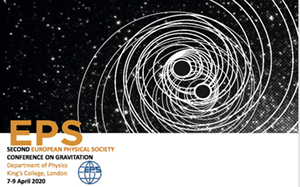Speakers
Description
We have analysed the time evolution of the acceleration noise in the LISA Pathfinder mission throughout the course of the entire science operations, from March 2016 to July 2017.
The noise across the LISA bandwidth turned out to be remarkably stable over the course of the mission, with a monotonic and well-understood initial decrease over time associated to the the declining residual gas pressure around the TM, while venting the experiment to space.
However, we observed a transient period of excess noise just below 100 uHz at the beginning of the mission, and a final end-of-mission two-month noisier phase, following a rapid system cooldown and the subsequent mechanical stress with long relaxation time.
We performed a Bayesian estimation of the contribution of all potential coherent noise sources for which we have some independent measurements. When adding the remaining modelled noise sources, the noise budget still does not account for the total noise observed during the core minimal-noise phase of the mission.
We present these results and discuss the most likely sources of the observed excess, based on the set of additional experiments and measurements performed during the mission. We also discuss the measures that need to be taken to maintain the LISA performance at the level demonstrated by LISA Pathfinder.

